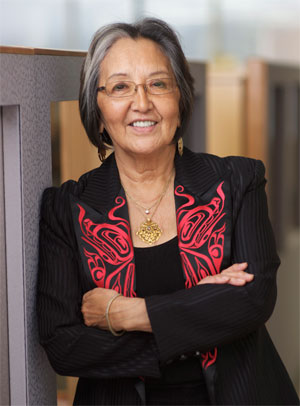
Southeast Alaska’s Native people wait 40 years for return of their land
June 15, 2011
Bills now in Congress would return land promised 40 years ago to the Sealaska Corporation. Passage of the Senate’s Southeast Alaska Native Land Entitlement Finalization and Jobs Protection Act (S. 730) and related legislation in the House (H.R. 1408) would complete the transfer and restore a measure of justice. The land represents a mere fraction of the 23 million acres that the U.S. took from us in 1907. With this 85,000-acre transfer, our Sealaska Corporation will keep 400 jobs, protect sacred sites and diversify the economy in one of the most remote places in the U.S. Senator Lisa Murkowski (R-Alaska) in her Senate bill also sets aside another 151,000 acres of the forest for conservation. For millennia we prospered by balancing our need to use our lands, Haa Aaní, with the need to conserve them and their many resources. But a century of U.S. ownership has made us paupers in our homelands, a rainforest more vast than any other in North America. We will never leave. In the century since the Tongass National Forest was established in our homelands, few Southeast Alaska residents, and even fewer of the tourists who come by the thousands, are aware of our presence beyond the name, taken from a Tlingit village near Ketchikan. We feel like environmental refugees who live in a desert, not a rainforest. We are restricted by misguided court decisions and conservation rules—latent colonial attitudes continue even in the 21st century to treat us like children who cannot manage the lands that we managed since time immemorial. One example is Glacier Bay, an ancient homeland for Tlingit clans, many of whom now live in the village of Hoonah. Our oral history tells of the movement of glaciers across the bay, and yet our people remained because of the ties we have to our lands. I can remember our elders telling us about U.S. National Park Service personnel burning our cabins at Glacier Bay to try to force us to leave. One of the ancient practices among our people is to gather seagull eggs, a traditional delicacy, at Glacier Bay. But now we are not allowed to do even that. Historically, our fisheries in all the waters of Southeast Alaska provided our wealth. Now, like other fishermen, we are regulated by the state and its licenses. Today, Alaska’s salmon stream out of the state—iced, boxed and jetted down to the toniest restaurants and the wealthiest homes in the Lower 48. Our subsistence fishing, which should be protected, amounts to only 2 percent of the fishery. Yet we are 16 percent of the population. If our fishermen were allowed even 16 percent of our aboriginal fishery, we could feed whole villages. When our people want to make arts and crafts for sale, government regulations presume to tell us what our traditions are. For example, when some wanted to make teddy bears from certain animal furs, regulators told them that it wasn’t our tradition. Yet for millennia we made whatever we needed, whether clothing, toys or other items. If there is a tradition at play here, it is our tradition of making items from the resources on our lands for our own use, for sale or for doing business in other ways that provide for our people. Sealaska Corporation follows in that tradition: developing new businesses, managing lands, providing jobs, giving scholarships, and preserving our heritage so that we will always speak our languages, sing our songs, and dance our dances on our homelands. We have waited 40 years. Now it’s time to pass the legislation that fulfills the pledge of land made to us. Rosita Kaahaní Worl About: "Rosita Kaahaní Worl, Ph.D., was a member of the founding board of trustees of the Smithsonian’s National Museum of the American Indian, and is president of the Sealaska Heritage Center and vice chairwoman of the Sealaska Corporation."
Received June 14, 2011 - Published June 15, 2011
Viewpoints - Opinion Letters:
and do not necessarily reflect the opinions of Sitnews. Your full name, city and state are required for letter publication.
|
||
